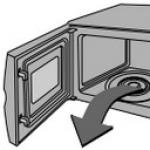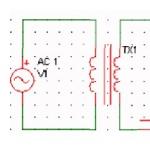Location and type of garden paths - important factor, which largely determines the whole impression of the garden. Our detailed instructions will tell you how to give the site a finished look.
- 1 of 1
On the picture:
1. What needs to be planned in advance?
Location and number of lanes. Usually other, smaller ones depart from the main and widest path. Think about which places on the site you will visit more often - the required density of the canvas depends on this. Path planning also depends on the terrain of the site and climatic features terrain.
2. What kind of material to use?
The art of imitation. The market has fake diamond, imitating a saw cut of a tree - it looks just as good as natural wood but more durable. Artificial stone, more durable and light, can replace paving stones, cobblestones, pebbles, bricks.
Rigid pavements for the main road. The wide road leading from the gate to the porch or garage is subject to the greatest stress. It is better to choose for it monolithic concrete or slabs, stone (natural or artificial), brick, paving slabs.
Soft coverings for small paths. The tracks of the "second plan" are usually covered with embankment, soil, or even wooden deck. A green garden path made of neatly planted grass also looks advantageous, but this option requires especially careful care and well-chosen surrounding plants.

- 1 of 1
On the picture:
3. How to arrange the base of the track?
with geotextiles. A geosynthetic sheet of polymer fibers is placed at the bottom of the trench and between a layer of sand and gravel. Geotextile does not rot, mold and fungi do not appear on it. The canvas protects the track from subsidence and prevents roots from growing garden plants. The use of geotextiles on heaving soils is especially important. Its thickness depends on the load on the track.
4. How to lay a hard floor?
In the photo: a path from a project implemented by designer Svetlana Kudryavtseva and architect Oleg Likhachev.
Depends on the soil. A trough is dug in stable soil, rammed, and geotextiles are laid. A layer of rubble is leveled, water flow is arranged and geotextiles are laid again. Next, sand is poured and rammed with water, curbs are installed on the sides. Problematic soil may require a 5 cm sand pad laid on a layer of geotextile. After laying, the crushed stone is poured with a cement-sand mixture, which can be reinforced metal mesh. If the road is built from monolithic concrete, do not forget about the "expansion joints" to avoid the appearance of cracks.
5. What is suitable for bulk coating?
Coarse sand, stone chips, pebbles, wood. Even such an exotic material as a pine nut shell will do. Wood bark and wood chips must be treated with an anti-rotting compound. Lightweight materials will blow out over time, so upper layer needs to be updated from time to time.
6. How to lay the bulk coating?
Thin layers. Each layer is then compacted with a roller or vibratory plate. First, the trench is covered with a 10 cm layer of gravel, then a 15 cm layer of soil is laid. As an alternative, you can use a mixture of clay and sand in a ratio of 30 to 70. Such a path needs to be strengthened with geotextiles, make a slope, and then give clarity to the edges.
7. How to care for a wooden walkway?
Soak with antiseptic and varnish. A wooden garden path is short-lived and prone to decay, but it is pleasant to the touch and looks cozy. The 25-30 cm base of such a path is filled with several compacted layers of sand, then covered with gravel or crushed stone. Boards, bars, garden parquet, wooden cuts or hemp are placed on top.

- 1 of 1
On the picture:
\\\if you raise it - it's safer
8. Are curbs necessary?
Yes, if you have a soft coating. The border will not only give it a neat look, but also prevent the path from deforming. The material of the border and the cover do not have to match. Brick, tile, timber, wooden logs, metal and plastic are equally well suited for decorating paths. Do not be afraid of plastic - it is easy to install, looks neat and will last a long time. Hidden steel strip curbs are usually laid along cobbled paths.
9. How to ensure water flow?
Make a slip. The convex profile of the track should give a slope of about 2-3 cm from the axis to the edges. running meter. The slope is best done in two directions, towards drainage ditches. If the slope is more than 5 cm (for example, at the bulk path), the structure should be supplemented with a step.
10. How to decorate a walkway?
With the help of plants. Place a fertile mixture in the gaps between the stones and plant herbs, shrubs or flowers. Mosses will do decorative types plantain, atsen, thyme, fescue or tenacity.

- 1 of 2
On the picture:
Other projects of garden paths on interiorexplorer.ru |
| Walkway from the project implemented by architect Yuri Kulikov | Walkway from the project of the architectural bureau 5 Radius | Path from the project of the architectural bureau Arkanika |
Comment on FB Comment on VK
December 27, 2010
When you arrive at an unfamiliar garden plot, the first thing you pay attention to is the paths. After all, you need to somehow get to the house, gazebo, patio or garden beds, without tearing your clothes and not soiling your shoes. And very often, at best, you see cracked concrete, warped tiles, and at worst, boards sunk in the mud or deep ruts. How to make comfortable and durable DIY garden paths? Let's start with three categories.
Third category. Trails.
The name itself indicates that such paths are trodden with feet, compacted by the wheels of a wheelbarrow or car. The ground on the path is dense and, as a rule, sagging. Therefore, trails are often the site of potential puddles. To turn the trail into a convenient path, first of all, it is necessary to ensure the removal of stagnant water from it. To do this, align the contour of the track: the pits fall asleep, and the bumps are cut off. Sand is brought into the path itself and driven into the ground. Sometimes crushed stone is added to the sand.

The next necessary step is planting the trail with soil-retaining plants (for example, low clover) or setting up a mixborder.
Second category. Tracks with a covered base.
These are traditional garden paths on cultivated garden plots. During their construction, they dig a bed to a depth of 10 cm. The bottom and sides of it are covered with geotextiles with a density of 150-200 g / sq.m as a barrier for the roots of herbaceous plants. The sides of the bed are also often fixed with a curb tape. The entire bed (up to the soil level) is covered with crushed stone, pebbles or screenings. To give the path a decorative effect, separate paving slabs or flagstone stones are laid on it. These elements are buried in the backfill layer so that they do not rise above the path and above the soil.

With another method of building garden paths of the second category, the decorative coating is tightly adjusted to each other. In this case, the depth of the bed is made 5-10 cm and arranged sand cushion. Paving slabs, paving stones, flagstone are laid above the soil level, and the edges are fixed with a curb. It is made from a garden board or cobblestone laid on cement mortar. But usually they do without a curb, bringing the lawn close to the path, or break the mixborder. The seams between the coating elements are covered with sand and sown with dwarf lawn grass.
If they are building a "Swiss path" (1 step - 1 stone), then a sand cushion is prepared under each of the stones, laying them at the level of the soil.
First category. Walkways with a solid base.
Such capital tracks are made where a large load is provided for them. During their construction, a bed 15 cm deep is excavated. In places where rain or melt water is expected to accumulate, its removal is ensured. Sand is poured into the bed, leveled and rammed. The height of this drainage layer should be about 5 cm. The sides of the bed are framed with a border tape, and if it is not there, then with old linoleum or roofing felt cut into tapes.

Usually such a foundation is made at ground level. If they want to raise the path significantly, then strips of plywood or boards are used as formwork, respectively, securely fixed. The concrete base itself, in order to avoid rupture, is either reinforced or thermal seams are arranged every 1.5-2 m. The second solution is cheaper, but with the advent of spring there is a danger that improvised concrete plates rise or fall relative to each other.
This will not happen with reinforcement concrete base. It is only necessary to remember that armored nets from beds, chain-link mesh, bicycle frames and other similar rubbish, which “zealous” owners “roll” into concrete, are completely unsuitable as reinforcement. It is necessary to reinforce with a bar with a diameter of 5-8 mm or with grids welded from a bar with dimensions of 0.5 × 2 m and with cells of 10 × 10 cm or 10 × 15 cm. The reinforcement is placed on stands for which fragments of bricks are suitable. They are necessary so that after pouring the reinforcement is in the thickness of the concrete.
Concrete is laid in a bed and moderately rammed. If there is not enough concrete for the entire track, a cross-beam made of a board is installed at the end of the pouring, so that the concrete breaks off with an even “cut”, without sagging. When pouring a new batch of concrete, the crossbar is removed.
This is how the entire base is gradually made, and after the concrete has set, a decorative coating is laid on top (on the cement mortar) ( sidewalk paving stones, tiles, natural stone) and, if necessary, a border. Usually, in its final form, the track bed is 3-5 cm above the soil level, which provides protection from soil alluvium on it.
Video: do-it-yourself garden path in 1 day
A well-groomed path ennobles the site and gives it a finished look. Therefore, it is so important not to leave untrodden paths overgrown with grass in the garden, but to create a network of neat and conveniently located paths.
Tired of laying paths in your garden? Perhaps it's time to draw a plot with solid paths? We tell you what you need to know before you get started.
1. How many paths should there be in the garden?
It all depends on the size of the site and its layout. In order to correctly arrange the paths in the garden, it is worth first drawing a plan of the backyard area on paper, and then marking the paths on it: they should provide access to even the most inaccessible corners of the garden.
Usually, one wide main road is laid on the site, from which paths depart. The main path should follow the path that you most often travel on. The number of small tracks does not matter. The main thing is to place them in the garden correctly so that they help you get to the places you need on the site.
2. What material is the track made of?
Rigid coatings
The main road, which leads from the porch to the exit from the territory, is used most often, which means that it can become unusable faster than others. Therefore, for its arrangement, it is recommended to choose durable materials: stone (natural or artificial), brick, paving slabs or monolithic concrete.
Soft coverings
For paths that carry less load, you can use lighter materials: embankment or wood.
Combined tracks
Sometimes a combined coating can be used for garden paths. Such "arteries" of the site combine the qualities of both soft and hard materials. Often this is done in order to achieve a better visual effect. But sometimes such a combination can also serve a practical purpose. For example, bulk materials can be excellent drainage.
Today on sale you can find an artificial stone that imitates a saw cut wood and looks just like a real tree. If you want a treadmill to look "light" but still be made of durable material, look into this material.
3. How to lay a "hard" track?
The principle of laying the track from durable coating depends on the structure of the soil on the site. If the soil is dense and stable, first you need to dig a trench, compact the soil well at the bottom, lay a layer of geotextile, crushed stone for drainage on it, then again geotextile and sand, which again should be well compacted. If necessary, borders can be installed on the sides.
On unstable ground, the path is built according to a similar principle, first laying a sand cushion on the first layer of geotextile with a layer of 5 cm, and pouring crushed stone with a cement-sand mixture (can be reinforced with a metal mesh).
4. Why is geotextile laid on the track?
This material is placed at the bottom of the trench (future path) between layers of sand and gravel. It is needed in order to protect the track from subsidence. The material is good in that it does not rot and is not covered with mold or fungus, since it consists of polymer fibers. Also, the roots of plants cannot break through the geotextile.
5. What to make a bulk path?
To create a bulk path, coarse sand, stone chips, pebbles and even wood are suitable. The main advantage of these materials is their ease of use. But they also have a minus: over time, they are “blowed away” by the wind, so periodically you have to add backfill. As for tree bark and chips, these materials must be additionally processed before use. special composition against decay.
6. How to lay the bulk coating?
The bulk coating is laid in layers, each of which is compacted with a roller or vibrating plate. But before that, you need to dig a trench and lay a layer of a mixture of gravel and clay about 10 cm thick on the bottom, and pour the same layer of sand on top. Bulk material is recommended to be laid in parts, wetting each layer with water so that they are better compacted. It is not necessary to moisten only the covering of mulching materials. The top layer should consist of the smallest fractions. It is leveled with a rake.
7. Is it worth making paths out of wood?
The wooden path is not very durable, but it is a non-standard option. Of the minuses, one can name the fact that the tree is prone to rotting and becomes slippery during rain. On the other hand, it is very pleasant to walk on such a coating, it looks good among grass or stones and helps to create on the site natural style. Therefore, each summer resident decides for himself whether it is worth laying a garden path from this material.
If you decide that a wooden path is exactly what you need, remember a few rules for arranging such a path. The base of the wooden path must be laid out with several layers of sand, then with a layer of gravel or crushed stone. On top of such a flooring, you can lay wooden saw cuts, hemp, boards and even special garden parquet.
A garden path is an integral part of any site. It brings to it not only beauty, but also functionality. The need for garden paths is especially acute during heavy rainfall, when the soil turns into an impenetrable swamp and the path laid with solid materials becomes the only salvation in it. garden paths are the most different types and from different materials.
Types of garden paths are determined mainly by the type of material used in their manufacture. The selection of material takes place according to several factors, among them the availability of certain paving methods, and how harmoniously the path fits into general concept garden and personal aesthetic preferences. It will help to study the most common types of garden paths photo and description below. Also below are the basic rules for caring for paths and how to decorate them.
- Paths made of concrete or tiles. Most popular type paving garden paths. This material is resistant to frost, has a long service life, is very durable and at the same time has a low price. Another advantage is the wide range of applications. concrete tiles they lay out not only walking paths, but also a check-in to the garage, which is much more convenient and cheaper than asphalt pavement. Tiles are produced in a variety of shapes and will satisfy any consumer needs.
- Tracks from natural stone. Very practical material, moreover, it looks natural and aesthetically pleasing and fits into almost any garden. The only nuance that makes stone paths not so popular is high price. These paths are paved with marble, granite, labradorite, basalt or limestone slabs. And the price of finished products is quite high.
- Paths made of pebbles, gravel or crushed stone. In terms of naturalness and harmony, they are not inferior to natural stone, but they are much cheaper. Such paths are simply poured in an even layer or laid out in beautiful patterns.

- The brick paths are high quality coverings are easy to lay and have pleasant color schemes.
- The coating for wooden tracks is durable and versatile, as it is treated with special substances that prevent their decay and destruction.
- Plastic tracks - the material is not very natural, but almost eternal. At the same time, plastic tracks are very easy to mount.
- Tracks from ceramic tiles have a very pleasant and varied appearance. Of all kinds decorative coatings ceramic tiles are perhaps the most striking and original in their colors.
- Paths made of decorative concrete combine the qualities of ordinary concrete and tiles. From conventional concrete the decorative counterpart took strength and durability, and the tile has a pleasant appearance. Giving all the best different ways, also used plastic mold. A decorative concrete garden path is a little more expensive than a tile and requires special care, but it also finds its customers.
- Grass paths are a very original type of garden paths. Such paths are densely sown with grass lawn. They are beautiful and pleasing to the eye, give coolness in the heat, but require a special approach.
Care of garden paths of various types
As mentioned above, the garden path requires personal care. It is necessary to monitor the condition of the material from which it is made, and the shape of the garden path, and the elements of its design, if any. The care of many materials is similar to each other, but in each approach there are some differences and nuances.
1. Caring for concrete walkways.
- first of all, any path must be kept clean, then it will last longer, while maintaining a respectable appearance. Clean up on a concrete path with a broom, vacuum cleaner or watering hose. It is necessary to carefully monitor the plants growing between the plates, they must be disposed of in a timely manner, as the plants gradually crumble the base of the path. Weeds are removed manually or treated with a herbicide. Remove oil stains from concrete with special solution, which is sold in garden stores.
- concrete paths are prone to cracking. If the cases of the appearance of these shortcomings are isolated and they are not great, then you should not worry about this. If the crack continues to grow, then it is overwritten with a solution. When there are many such formations, the entire damaged segment of the track is changed. Pits are closed up in a similar way- the edges of the pit are chipped off, the entire inner surface of the hole is treated with PVA glue, and then rubbed with a solution. Sagging or staggering sections of the track are removed and placed on a layer of mortar so as to return the structures original view. To determine the required solution layer, a building level is used.

2. Maintenance of natural stone walkways.
- One of the main advantages of natural stone walkways is that they are easy to maintain. Even in winter period they are cleaned in any way without fear of damage. Slabs for paths are made mainly from a single piece, and the stone is, by its nature, a material hardened from all natural disasters. But even if chips appeared on the stone during operation, this will not spoil it, but will only add naturalness to its appearance. It is only necessary to remove the grass at the joints of the slabs of the track and remove debris from it;
- the only exceptions are slate or limestone slabs, which must be treated with special water-repellent solutions. Garden paths, the stone of which is made of these materials, quickly collapse if this procedure is not carried out.

3. Care of paths made of pebbles, gravel or crushed stone.
- paths made of bulk stone materials must be protected from moisture, and especially from current flows of water. Water gradually washes away the bottom layer of the track, changes its original shape and spoils the appearance. A drainage system or a simple ditch will protect the path from streams. Weeds must be carefully removed, but moss should be left if desired. It will destroy the structure of the stone for decades, but it will give the path a particularly natural and natural look. If, nevertheless, there is a desire to remove the moss, then it should be pulled out along with the roots, in whole bunches. If a pit has formed on the path of bulk materials, the entire top layer is removed to a hard surface and the stones are poured and tamped again.

4. Caring for a brick walkway.
- if the path is made of bricks specially designed for this purpose, then it does not require maintenance. Garbage from such a path is removed by any convenient way, no limits. If, for masonry, an ordinary building brick without coating, then such a track will not last long, no matter how well it is looked after. The service life will be a little longer if you think about it functional system drain water and clean up garbage only with a broom.

5. Caring for a wooden walkway.
- wood - the material is not moisture resistant, so careful care is needed for a wooden path. It is necessary to monitor the condition of the material and its coating. Periodically clean the coating with a metal scraper, treat with an antiseptic and reapply the coating. Options protective coating for wood - drying oil or paint. Ideally, the entire garden path is subjected to this procedure once a year. The tree gives a pleasant tactile sensation when walking, but if left unattended, it collapses unpleasantly quickly.

6. Caring for a plastic track.
- The plastic track is practically maintenance-free. It is recommended to wash it with a hose, you need to do this a couple of times a month. In winter, such a path is cleaned carefully so as not to leave scratches. If some elements plastic track failed or began to stagger, then they are removed, poured a little base on which the track is installed and put the elements in place.

7. Caring for a ceramic tile walkway.
- Paths made of ceramic tiles are relatively fragile and require a lot of attention in winter when clearing snow. In summer, it is necessary to carefully wash off the debris from the tiles with a mop or sweep it with a soft broom. It is necessary to carefully monitor the condition of the tile joints. They are periodically overwritten with a special strengthening solution, or they are cleaned and refilled if the seams are very worn out. For ceramic tiles use a special wax mastic, which gives it shine and protects from environmental influences.

8. Caring for a decorative concrete walkway.
- Concrete itself is a very durable material, but, nevertheless, decorative concrete requires special care. Once a year, its surface is covered with a water-repellent solution, and if the concrete is coated with a dye, then they use clear nail polish sealant. During cleaning concrete walkway from snow, care must be taken not to damage the top coat.

9. Care of grass paths.
- The scheme for caring for a grass path is much more complicated than any other. It is necessary to water such a lawn for walking twice a month, on hot days watering is carried out more often. The grass on the path must be mowed periodically. The frequency of this procedure depends on the rate of grass growth, optimal height plants for the path - 3-4 cm. The cut grass is not removed immediately, but left for a day so that the soil on the path does not dry out. With autumn cooling down to 10 ° C, watering and mowing are stopped;
- so that the grass garden path preserves good view, and the cover remained thick, it must be loosened. This is done by puncturing or cutting the soil before watering. To do this, use special slippers with spikes, aerators or ordinary garden pitchforks. grassy path in spring without fail fertilize. Also in the spring, it often becomes necessary to renew the turf that has frozen over the winter. In this case, the dead places are removed, and new grass is sown in their place.

Winter garden care
The main maintenance of any kind of paths, except for grass ones, takes place in winter during snowfalls and ice formation. It is necessary to clean off the snow even in those places that are not walked on in the winter, otherwise it will cake into an ice mass. Snow is removed from the paths with wooden shovel, panicles and scraper. A small amount is removed with a broom, but a layer of 10 cm is cleaned off with a shovel. After removing the snow masses, it is necessary to carefully sweep the remnants of snowflakes from the path, otherwise a thin crust of ice will form on it.

If the snow is not removed on time and ice has formed, it is impossible to chip it off with a crowbar or other similar tools, as this procedure will damage the track surface. It is safe to remove the ice with a shovel, pushing it under the layer and prying it. The use of salt and various chemicals for thawing is also not recommended, as they will leave marks on the path and shoes and spoil the soil adjacent to the trail. It is better to prevent the formation of frost and remove snow in a timely manner.
For snow removal there is a convenient and modern device - a snow blower. These mechanisms are produced in different sizes, differ in the range of snow ejection and in cost. This invention is especially convenient for owners of large plots. Another progressive method fight against ice and snow - electric heating. The principle of operation of this device is similar to a similar system called "warm floor". A cable is laid in the tracks, a sensor is installed that records the temperature and starts the heating system. In the autumn, vacuum cleaners for garbage collection are very convenient and effective for cleaning fallen leaves.
Garden path decoration
A garden path made of any material is complemented and ennobled different ways. Decorating garden paths is the creation of a unique and original image that will make the garden unique and vibrant. There are many ways to decorate, you need to choose one that is in harmony with the garden, meets taste preferences and will not create inconvenience.

- Decoration with plant borders. A narrow strip of plants is planted on both sides of the path, optimal width- 10-30 cm. It is recommended to plant only flowers of the same type on the border or in such a combination that the plants do not harm each other. For the border, only low-growing breeds of flowers are selected that will not interfere when walking along the path.
- Glowing stones. This accessory is brand new. landscape design. With such an ornament, a path is laid out along the edge or flower beds are laid around the perimeter. In addition to the beauty of the glow at night, this decoration is also convenient, as it helps to navigate the site in the dark.
- Bottle border. To implement this idea, it is desirable to choose a material of the same color and size. To avoid long searches required containers, use bottles of the same shape, and give them the same color using spray paint. They make out in this way the boundaries of the path or its very foundation. The path made of bottles looks very original, while it is practical and not demanding to care for.
There are many more ideas for decorating the garden path and the entire garden. You just need to turn on all your imagination and approach the process creatively and with a good mood.


















